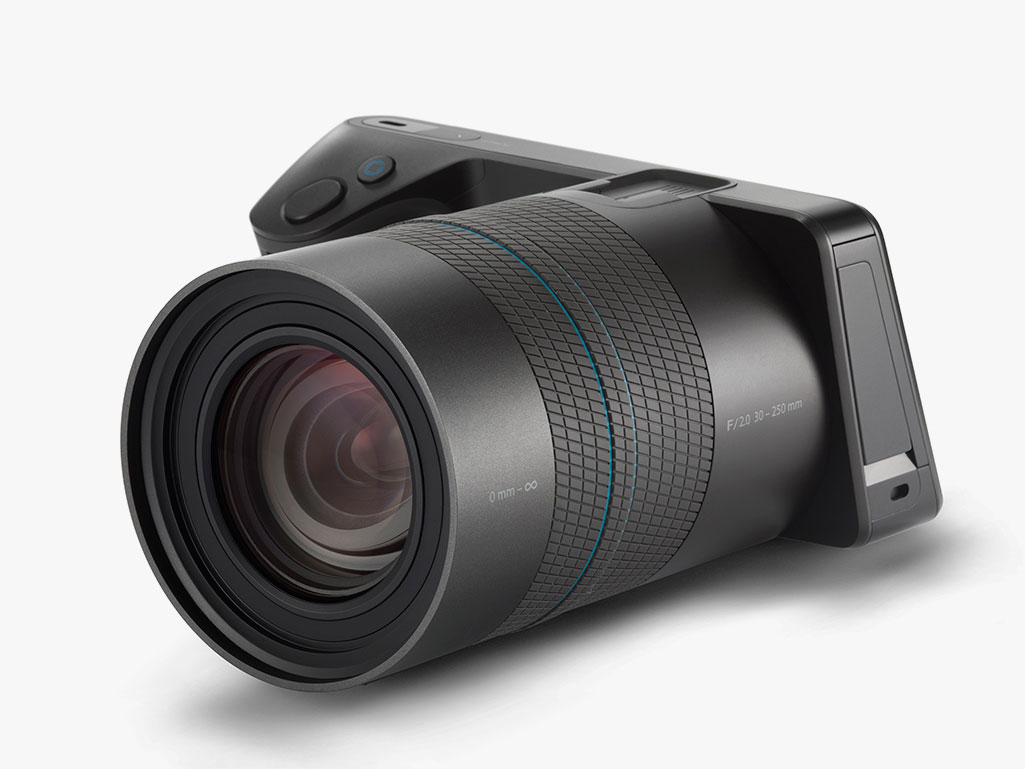Lytro's Illum Light Field Camera Fixes Focus After Capture
Lytro's Illum camera captures 40 million rays of light and its direction to let you adjust focus and depth of field after you shoot.

Lytro today unveiled its second so-called light field camera, a system that lets you refocus a picture after it has been taken. The Illum is an upgrade from its predecessor, and you can pre-order it now for $1,499 (retail $1,599 after July 15).
You may never have heard of light field cameras, since the technology has mostly been limited to labs and specialized studios until Lytro brought it to consumers in 2011. As its name suggests, a light field camera captures the entire light field it sees, and it can record not just static details but also light rays and the direction in which they are moving.
MORE: Camera Buying Guide
Using companion software (on PC/Mac) or via the LCD touchscreen on the camera's back, you can choose a different focal point on your picture after it's been shot, build custom animations, and export your images into common formats such as JPEG. With a special plugin, people can interact with your pictures on their browsers by clicking to choose their own favorite perspective. The camera can also help create 3D graphics, and let you select tilt and perspective shifts as well as adjust depth of field (how much of the photo is in focus).
If this sounds familiar to you, it may be because selective focus is a feature on Samsung's latest flagship camera. The Galaxy S5's 16-megapixel camera offers a Selective Focus mode that lets you choose between near, far or pan focus after you've snapped your shot. While similar to the Lytro, the Galaxy S5 has only three focus options, while Lytro's camera lets you choose any part of your photo to keep sharp.
The first generation Lytro never really took off despite rave reviews. Its body was a rectangular block with a lens on one end and an LCD touchscreen on the other — not a very sleek design.
The Illum, however, looks just like a DSLR camera, thanks to its body with a right-hand grip and large fixed, non-zoom lens.
Get instant access to breaking news, the hottest reviews, great deals and helpful tips.
This more-familiar form factor may lend Lytro's camera a sense of credibility to grow as a popular format in photography. Specs-wise, the Illum carries a 40-megaray (or million rays of light) sensor, up from 11 megarays on its predecessor and an impressive constant f/2.0 maximum aperture that lets in plenty of light. According to DPReview.com, the 40-megaray angular resolution provides images of 5-megapixel spatial (two-dimensional) resolution. Lytro also says it offers a high-speed shutter to let you snap sharp motion shots in a wide variety of conditions.
Follow Cherlynn Low at @CherlynnLow and on Google+. Follow Tom's Guide at @tomsguide, on Facebook and on Google+.
Cherlynn is Deputy Editor, Reviews at Engadget and also leads the site's Google reporting. She graduated with a Master’s in Journalism from Columbia University before joining Tom's Guide and its sister site LaptopMag as a staff writer, where she covered wearables, cameras, laptops, computers and smartphones, among many other subjects.
-
dstarr3 It generally worked pretty well. It has its limitations, sure, but still neat tech.But if I remember correctly, the resulting images from the first camera were quite low-res, and you never got an actual JPG out of it. Only a file that could be viewed or manipulated by the company's proprietary software. That may've changed since I last checked, but that certainly didn't help it gain any steam in the early days.Reply -
BiOniCFReaK Is lens interchangeable...say, (hypothetically) there would be an accident, lens is damaged, will there be a way to replace it, while avoiding buying new Lytro Illum?Reply

